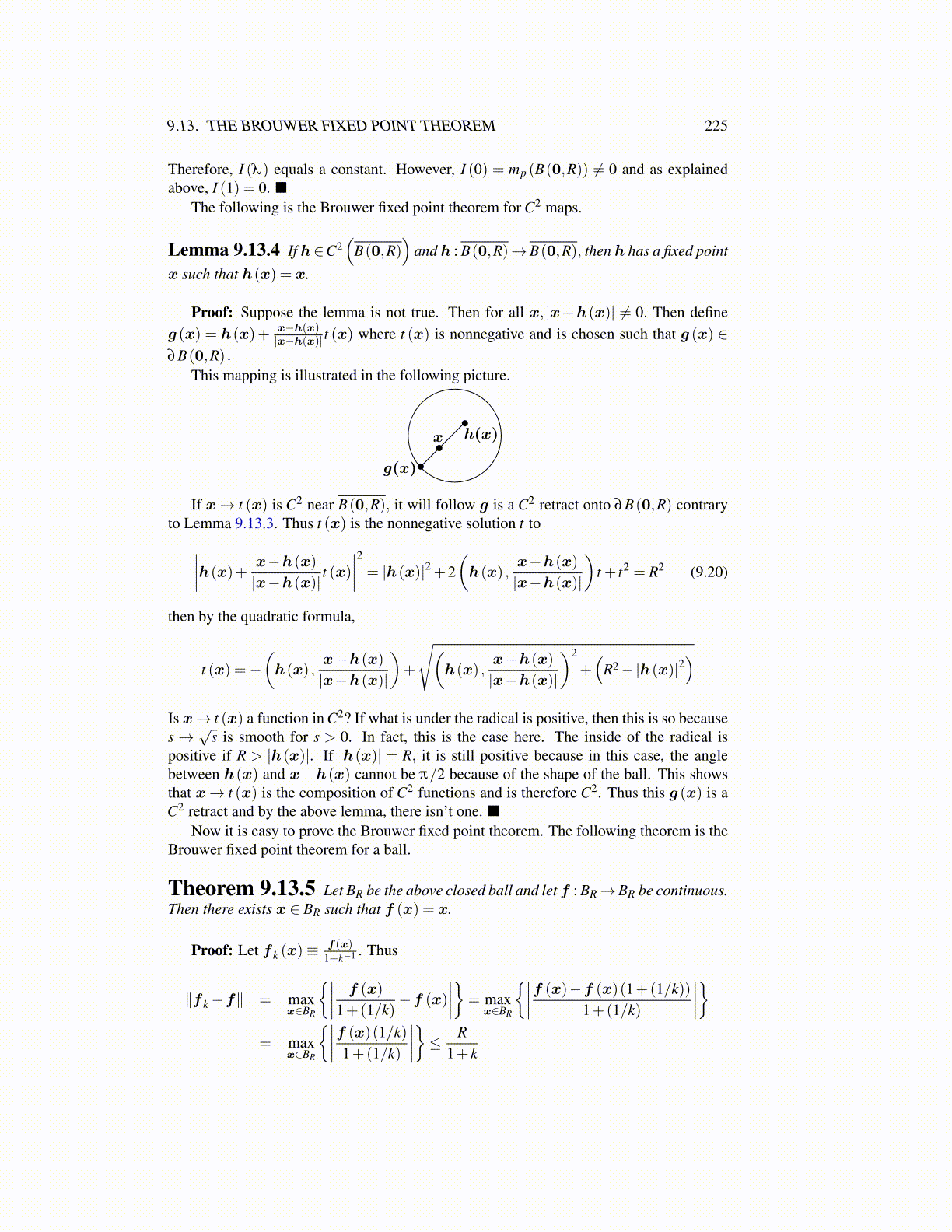
9.13. THE BROUWER FIXED POINT THEOREM 225
Therefore, I (λ ) equals a constant. However, I (0) = mp (B(0,R)) ̸= 0 and as explainedabove, I (1) = 0. ■
The following is the Brouwer fixed point theorem for C2 maps.
Lemma 9.13.4 If h∈C2(
B(0,R))
and h : B(0,R)→B(0,R), then h has a fixed point
x such that h(x) = x.
Proof: Suppose the lemma is not true. Then for all x, |x−h(x)| ̸= 0. Then defineg (x) = h(x)+ x−h(x)
|x−h(x)| t (x) where t (x) is nonnegative and is chosen such that g (x) ∈∂B(0,R) .
This mapping is illustrated in the following picture.
h(x)x
g(x)
If x→ t (x) is C2 near B(0,R), it will follow g is a C2 retract onto ∂B(0,R) contraryto Lemma 9.13.3. Thus t (x) is the nonnegative solution t to∣∣∣∣h(x)+
x−h(x)
|x−h(x)|t (x)
∣∣∣∣2 = |h(x)|2 +2(h(x) ,
x−h(x)
|x−h(x)|
)t + t2 = R2 (9.20)
then by the quadratic formula,
t (x) =−(h(x) ,
x−h(x)
|x−h(x)|
)+
√(h(x) ,
x−h(x)
|x−h(x)|
)2
+(
R2−|h(x)|2)
Is x→ t (x) a function in C2? If what is under the radical is positive, then this is so becauses→√
s is smooth for s > 0. In fact, this is the case here. The inside of the radical ispositive if R > |h(x)|. If |h(x)| = R, it is still positive because in this case, the anglebetween h(x) and x−h(x) cannot be π/2 because of the shape of the ball. This showsthat x→ t (x) is the composition of C2 functions and is therefore C2. Thus this g (x) is aC2 retract and by the above lemma, there isn’t one. ■
Now it is easy to prove the Brouwer fixed point theorem. The following theorem is theBrouwer fixed point theorem for a ball.
Theorem 9.13.5 Let BR be the above closed ball and let f : BR→BR be continuous.Then there exists x ∈ BR such that f (x) = x.
Proof: Let f k (x)≡f(x)
1+k−1 . Thus
∥f k−f∥ = maxx∈BR
{∣∣∣∣ f (x)
1+(1/k)−f (x)
∣∣∣∣}= maxx∈BR
{∣∣∣∣f (x)−f (x)(1+(1/k))1+(1/k)
∣∣∣∣}= max
x∈BR
{∣∣∣∣f (x)(1/k)1+(1/k)
∣∣∣∣}≤ R1+ k